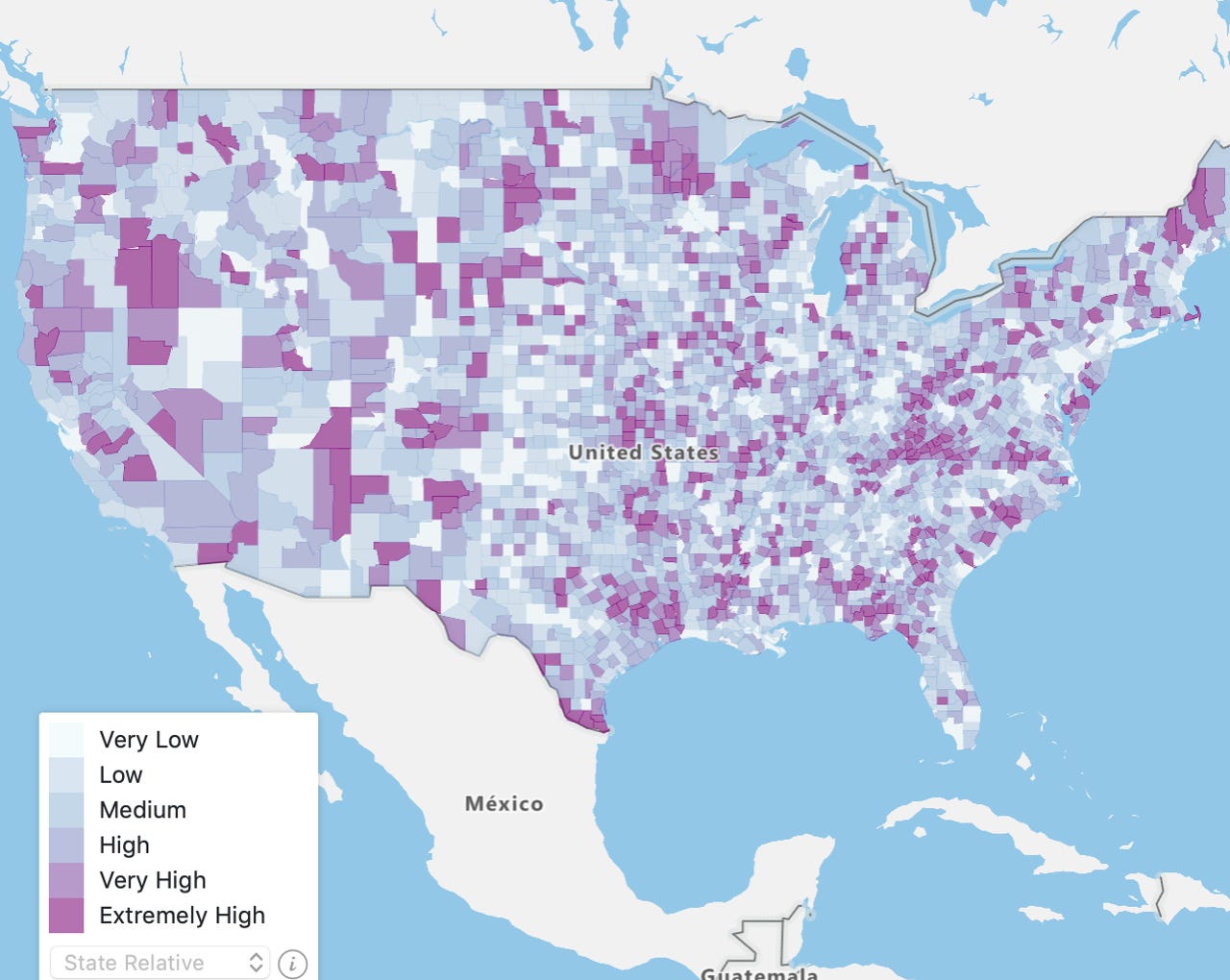COVID-19 mapped: Azure-powered tool IDs the most vulnerable populations


One of the biggest heartaches during the ongoing COVID-19 pandemic is knowing that health resources will not be adequately available for all sufferers. The problem is systemic and can't be patched quickly -- and one outcome of the crisis may well be reevaluation of how healthcare is delivered here and abroad -- but data can certainly help.
A company called Jvion, which specializes in what it calls clinical AI, is launching a COVID Community Vulnerability Map, a public facing tool built on Microsoft Azure maps that helps healthcare providers identify the social determinants of health (SDOH) that put populations at greater risk. That information can have a significant impact on on everything from community planning to resource allocation, and may help leaders proactively mitigate the risk to vulnerable populations.
Here in Los Angeles, for example, there's been a herculean effort to find beds and disseminate necessary resources and information to the city's vast homeless population, which is particularly vulnerable during an outbreak.
Jvion's interactive map identifies populations to the census block level that are at risk for severe outcomes upon contracting a virus like COVID. Those outcomes include death, but also hospitalization, which is particularly important during a health crisis when hospital beds are running short. Because health crises almost always have significant socioeconomic correlations, the map also calls out factors such as access to transportation or nutritious food. By overlaying additional data, such as the availability of hospitals and transportation, the map reveals compelling insights.
While there is not yet enough data from the pandemic for a COVID-specific risk calculation, Jvion drew from de-identified health data of 30 million patients. Jvion then looked at a representative sample to understand the risk drivers for similar viruses that can lead to acute respiratory illness and organ failure, such as influenza. The analysis identified disparities in risk between different patient populations, as well as the socioeconomic and environmental factors driving that risk.
"We are tremendously grateful for the thousands of healthcare workers on the frontlines of the battle against COVID," said Shantanu Nigam, Jvion's CEO and founder. "Their courage and rapid mobilization in the face of the greatest public health threat of our time has been incredibly inspiring. We are working around the clock to provide them with data-driven insights to help them protect the most vulnerable members of their communities."
The map is on-brand for Jvion, which enables healthcare organizations to prevent avoidable patient harm by identifying patients on a trajectory to becoming high risk and for whom intervention will likely be successful. It's solution has been deployed across about 50 hospital systems and 300 hospitals, who report average reductions of 30% for preventable harm incidents and annual cost savings of $6.3 million.